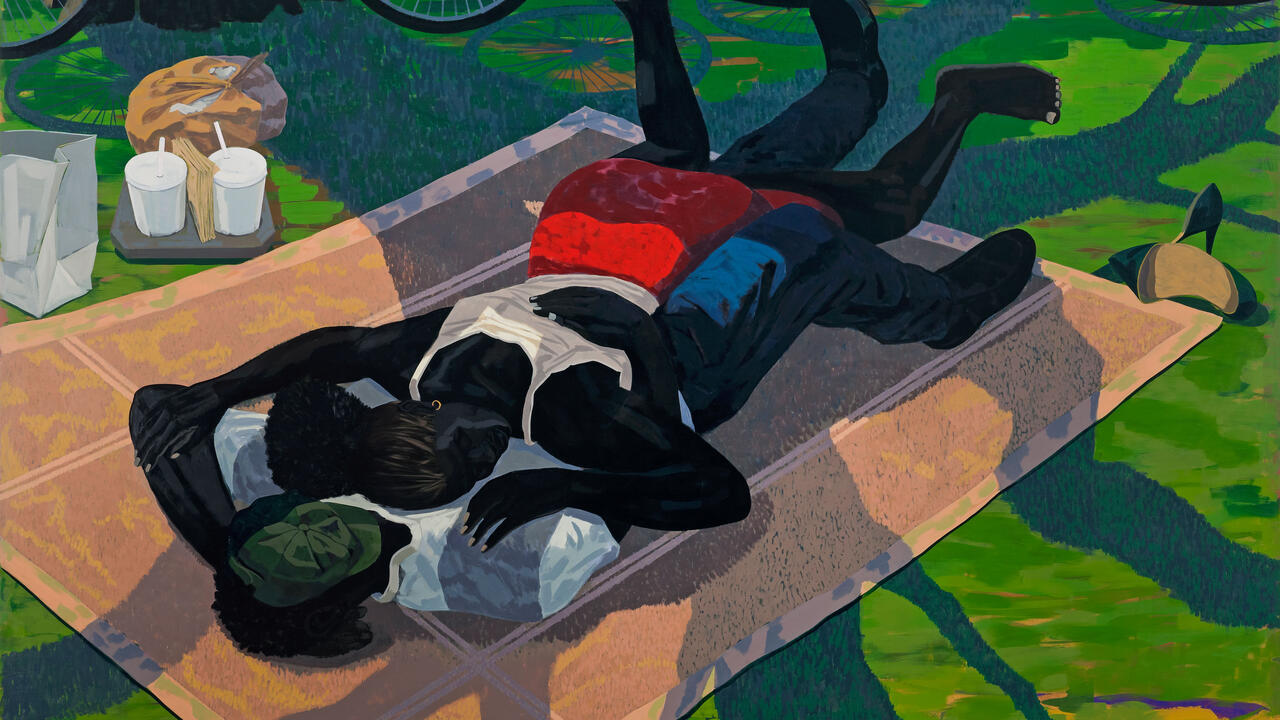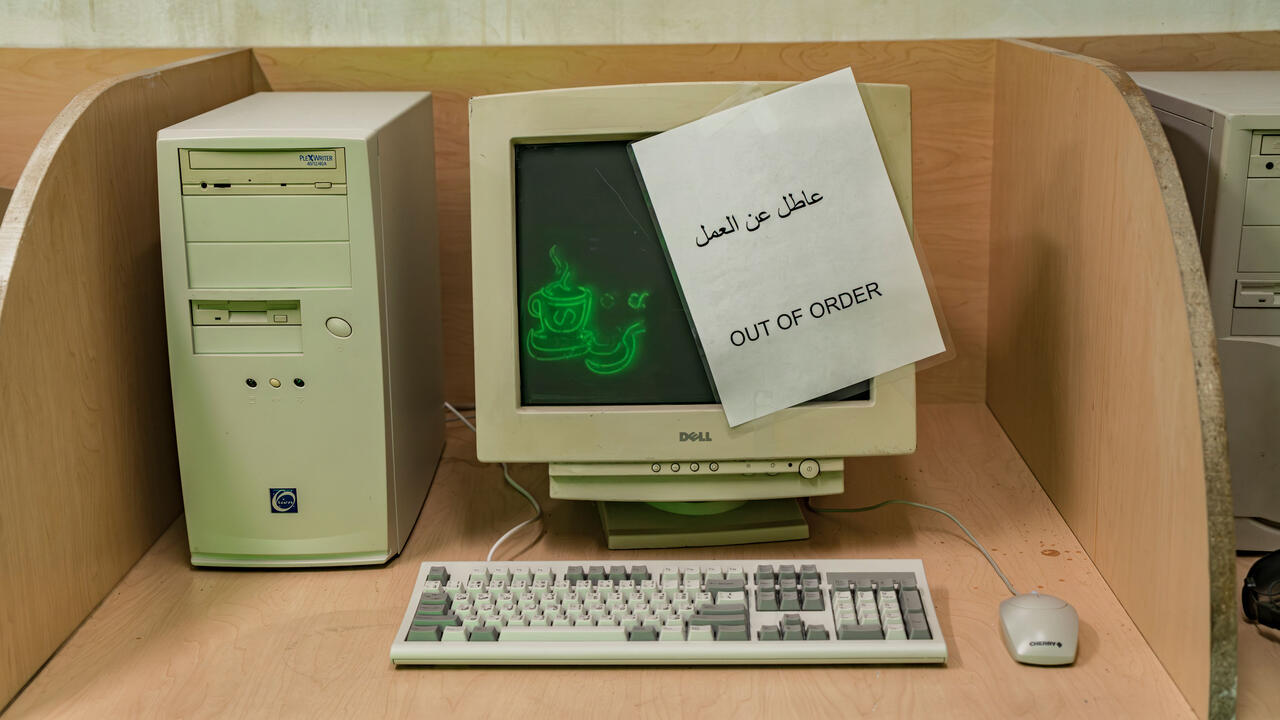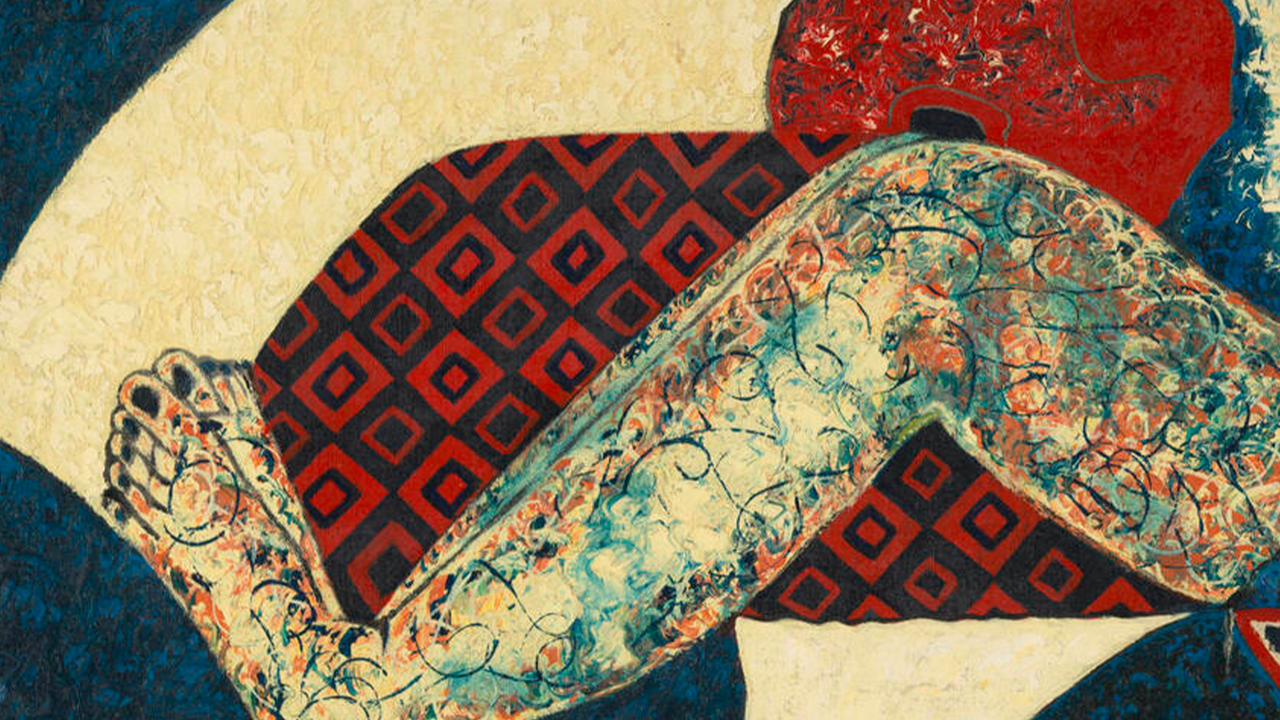Kerry James Marshall
Museum of Contemporary Art, Chicago, USA
Museum of Contemporary Art, Chicago, USA

For many African American artists, defining a black aesthetic has meant a long and painful attempt to find a place within a dominant white culture, a culture whose ideology and assumptions appear to be so pervasive as to seem invisible at times. In his masterful travelling exhibition, 'One True Thing: Meditations on Black Aesthetics' Kerry James Marshall has elucidated what Western culture has efficiently negated or appropriated: an African American sensibility capable of addressing universal themes.
Marshall is well known for his ambitious large scale paintings made to compete with 18th century Western history painting. But, in an ironic twist, Marshall's huge paintings depict vernacular African American settings such as public housing projects, thereby slyly placing those subjects within the canon of Western art history where they were previously ignored.
Marshall, however, has increasingly voiced a 'strategy of resisting prediction' in making his art, that is, resisting the expectation for a certain kind of art work - in his case, painting. Thus, he initially intended to create only one piece of art each in a wide spectrum of different artistic media for 'One True Thing'. As he prepared the show, however, Marshall decided that 'multiple fronts were needed to set forth a black aesthetic' and the exhibition then expanded into the museum's two main second floor galleries with paintings, sculpture, photographs, videos, installations, drawings and excerpts from the artist's cartoon series RYTHM MASTR, which originally began as a newspaper comic strip at the 1999 Carnegie International exhibition. Marshall also invited three other artists to show their work with his in an attempt to highlight the importance of community networks for African Americans and to challenge the conventions of originality and authorship expected in solo museum exhibitions. They were the sculptor Senga Nengudi, the painter Damon Lamar Reed and L. Eduardo, a Bolivian photographer - all of whom explored the situation of marginalized identity within a dominant culture.
Marshall's art draws from a rich layering of African language and culture, from the rhythms of Jazz and from the violent history of slavery, emancipation and the American civil rights movement. It is perhaps best informed by the anger and pride of the Black Arts Movement of the 1960s, but it is not an art of protest (the African American writer Larry Neal wrote bitterly at the time, 'Implicit in the act of protest is a belief that a change will be forthcoming once the masters are aware of the protestor's grievance.')
Rather, Marshall aims for a more fundamental aesthetic sensibility. He places blackness itself, as a look, as a history and as a way of being at the heart of his oeuvre, as the filter through which the viewer is compelled to think about the world. In this way, the culture of blackness no longer remains a category, acknowledged only during Black History Month or in special exhibitions, but becomes instead the ground from which perception itself unfolds - thereby setting on its ear the view which privileges a white point of view. ('We want a black poem,' wrote the Black Arts Movement activist LeRoi Jones in his poem 'Black Art' of the 1960s. 'And a Black World. Let the world be a Black Poem ...')
This theme danced repeatedly throughout 'One True Thing.' In the three-part sculpture series Africa Restored (2003), for example, Marshall layered sheets of black plywood into a Cubist representation of the African continent - a reflection of the predicament of black artists whose use of this African-based style has been labelled as derivative of white Cubists. Marshall also paired a video installation and a large painting, titling both works Garden Party (2003), as improvisations on the decorous 19th-century Impressionist depictions of garden picnics. In Marshall's work, however, the people in the scenes are African Americans, Hispanics and Asians, not whites.
Marshall's aesthetic emerged most poignantly in its most literal form, the colour black. His Black Painting (2003), for example, inspired by Ralph Ellison's book Invisible Man (1952) is a barely legible image of black figures emerging from a black ground. It is a work which attempts to characterize the condition of feeling both present and absent within a culture - a paradoxical state for many African Americans.
In a rumination on the idea of seeing within darkness, Marshall also produced a number of photographs illuminated with black light. Black Artist (Studio View) (2002) shows Marshall leaning back in a chair, his white shirt luminous in the murky atmosphere. He is contemplating another painting in the MCA show, 7 am Sunday Morning (2003). This work, ironically, depicts a blindingly sunny street in a black Chicago neighbourhood, and in its own way reflects the difficulty of visibility - of seeing and not seeing at the same time.






















